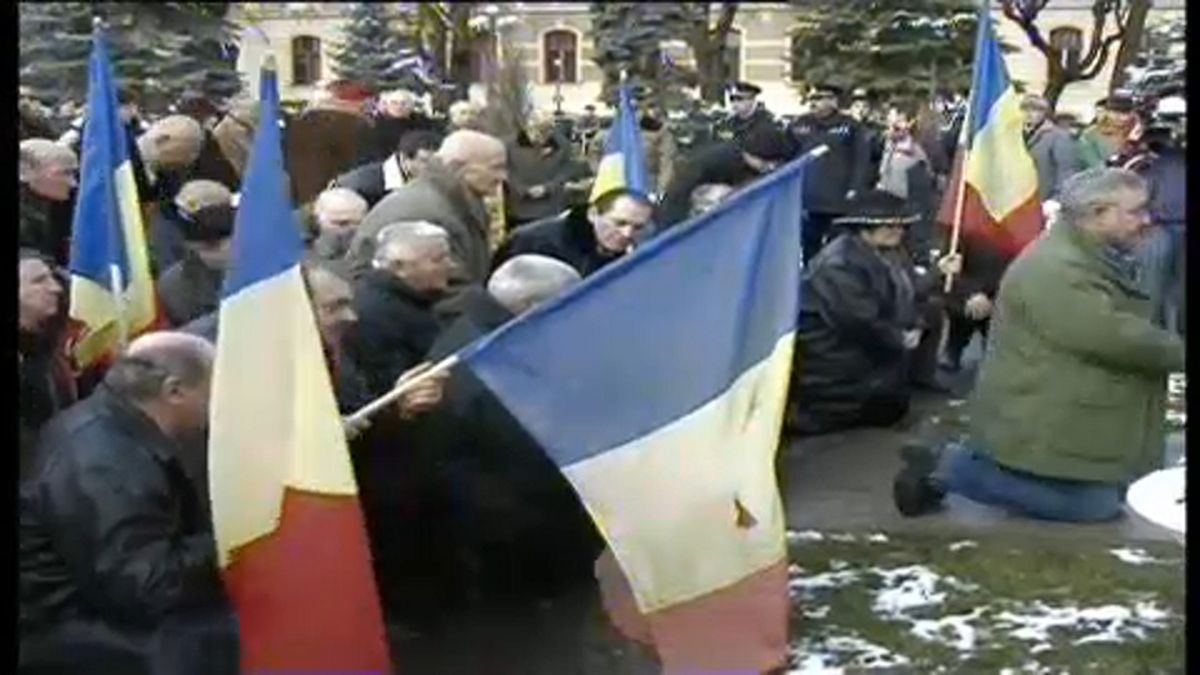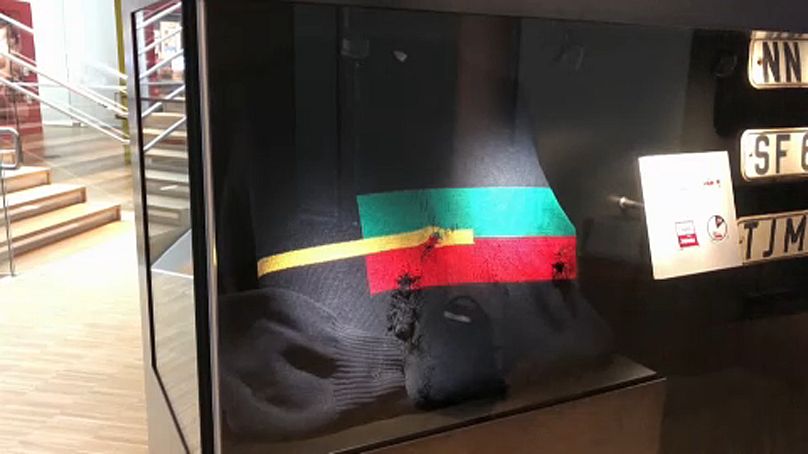Thirty years on from the revolution which brought down the communist regime, we look at some of the artefacts of repression under Nicolae Ceaușescu - from secret service documents to a simple typewriter.
Thirty years ago, the communist regime of Nicolae Ceaușescu ruled over Romania. It was a closed country watched over by a tight secret service. An estimated one thousand people died during the revolution.
Among the victims, Radu Ionescu, killed at the age of 17 in the centre of Bucharest. His portrait stands in the House of European History in Brussels, along with the sweater he was wearing the day he died. Its colourful design marked by holes.
"He was killed there together with 13 other young people and this sweater is what the family received a few days afterwards. He was wearing this sweater. They never had an explanation of how exactly he died," explains Simina Badica, curator, House of European History.
Nicolae Ceaușescu's ruled with an iron fist. His much feared secret police, the Securitate had half a million informants in the country of 22 million. Intellectuals were the main targets of the regime. Like Nobel prize winner, the German/Romanian writer Herta Müller. Secret files kept about her can be found here at the European House of History in Brussels.
"If you had a typewriter in 1980's Romania you would have to go each year to the police, you were called to the police each year to give a sample writing of your typewriter. It was certainly what we now call an Orwellian state, it certainly tried to control thinking that like this they will maintain their stability and their control over the population," explains Badica.
Romania had the only revolution that saw the perpetrator sentenced to death and executed, but there are still many questions that remain unanswered.
Thirty years on, the question being asked here at the museum is what the revolution meant for Europe.
"The lesson of the Romanian revolution is most of all a lesson of hope, of freedom, of people finally regaining their voices, stepping out into the streets, regaining their dignity, their courage and saying we want no more of this," explains Badica.
The European Parliament will adopt a resolution on Thursday calling on Romania to boost its efforts to clarify the truth of the past.
The text reads: No act of military aggression against one’s own people should remain unpunished.

